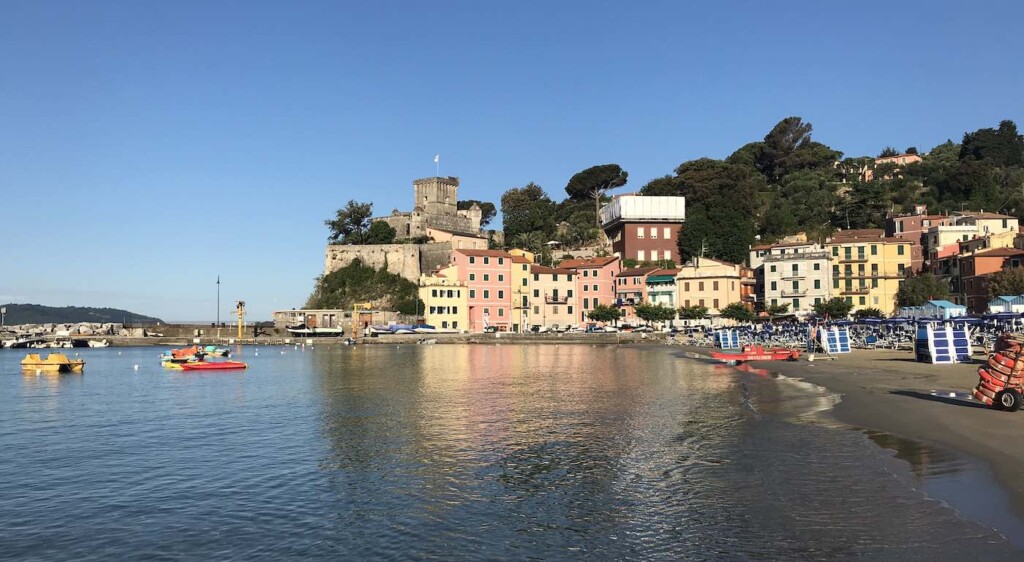 Public beach at Lerici in Italy is the Anti-Cinque Terre © Andrew Corbley
Public beach at Lerici in Italy is the Anti-Cinque Terre © Andrew CorbleyReprinted with permission from World At Large, a news website of nature, politics, science, health, and travel.
With the high season in Europe underway, many famous cities are already analyzing the results of new controls and taxes on tourism to manage overcrowding. The movement towards hindering tourism is nothing short of unprecedented.
One quote from AP is particularly jarring.
“Tourists are waiting more than two hours to visit the Acropolis in Athens,” it read. “Taxi lines at Rome’s main train station are running just as long. And so many visitors are concentrating around St. Mark’s Square in Venice that crowds get backed up crossing bridges—even on weekdays”.
But this year is just a demonstration. Come 2025, even more protocols will be implemented, including an EU-wide travel authorization system that will rake in tens of millions of euros and allow offenders of various tourist control measures to be easily identified.
There has never been a better time to look for B, or even C-list cities in Europe, and in fact there are many advantages to doing so.
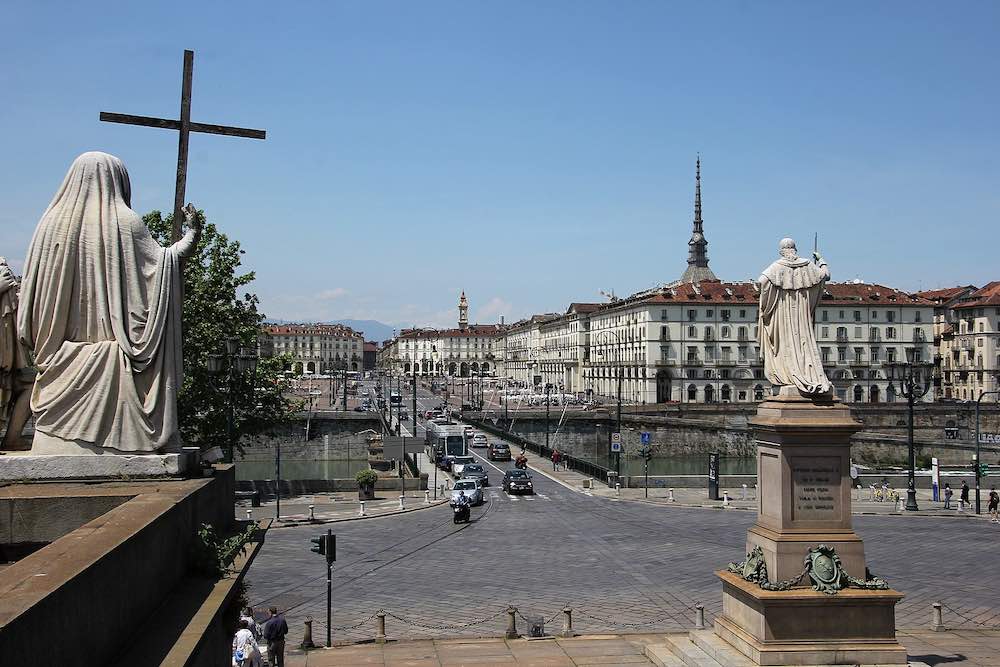 Piazza Vittorio Veneto in Turin – by Gianni Careddu, CC BY SA 4.0 license
Piazza Vittorio Veneto in Turin – by Gianni Careddu, CC BY SA 4.0 licenseItaly — the land of overtourism
Hoping to escape tourists in Italy is like moving a house next to a termite nest and hoping to escape termites. To see Venice, Rome, Naples, Florence, or Milan, visitors must be ready to bear the tourists, controls, and taxes.
Even if you visit a secondary B-list city, like Trieste, Siena, Genova, Lucca, or Verona, there’s no guarantee of escaping tourists. The city footprint is smaller, so the tourists may seem to be closer together.
In Rome, the city is now charging for entry to the Pantheon, and controlling crowds at the Spanish Steps and Trevi Fountain. Florence is now deliberately shrinking the number of short-term vacation rental properties in the city, a measure also implemented already in Rome that may lead to a price spike for accommodations.
Venice is doing the same but to an even greater degree. They’re also trialing a new access tax for day-trippers and regulating tourist group sizes to 25. The Guardian reports that €250 fines have been implemented for simply sitting down on the famous Spanish Steps in Rome.
Consider leaving all this behind for the city of Torino (Turin). The capital of the Piedmont region of Italy. This B-list destination is beautiful, spacious, and verdant—especially because a tree-planting program in the city has added two million urban trees.
Although last year the city saw record numbers of tourists—including the first time that international tourists overtook domestic ones—images from local papers reveal the size of the ‘crowds’ at the peak season, and lengths of the ‘lines’, which are quite modest.
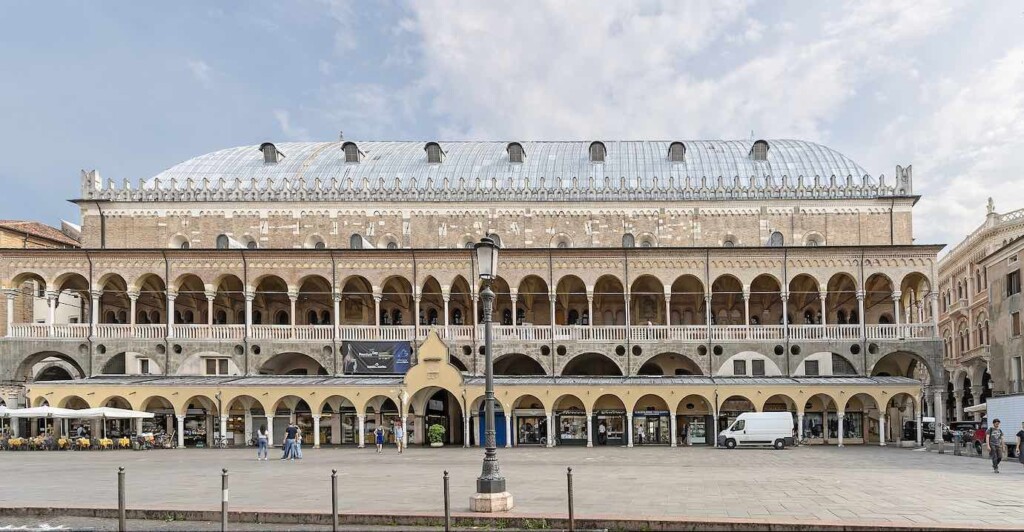 The Palazzo della Ragione in Padua is the old seat of the city administration and courts – View from Piazza della Frutta during high season by Didier Descouens CC BY SA 4.0
The Palazzo della Ragione in Padua is the old seat of the city administration and courts – View from Piazza della Frutta during high season by Didier Descouens CC BY SA 4.0Yet, Turin is a big city—just a little smaller than Bologna, and though it’s one of the 250 most visited cities worldwide, it’s merely the 10th most frequented in Italy. The per-night tourist tax at €3.70 per person for 4-star accommodations is half of Rome’s, and one-third less than Naples.
Do a search and gaze at the gorgeous scenery of Turin, which shares much of the iconic imagery of Florence and Verona, i.e. stunning plazas, a beautiful and broad riverside, and important museums.
Follow up with a visit to Padua, in Veneto, where there is no tourist tax to speak of. This hidden gem is just a 40-minute drive from the Venice airport and has been a center of higher learning and scholarship since the Middle Ages. It contains the oldest university in Europe, and perhaps the world’s oldest botanical garden for the purposes of scientific research.
Alongside numerous architectural treasures and achingly beautiful 14th-century frescoes that are recognized as a UNESCO World Heritage Site, it’s a mystery that Padua is not more frequented.
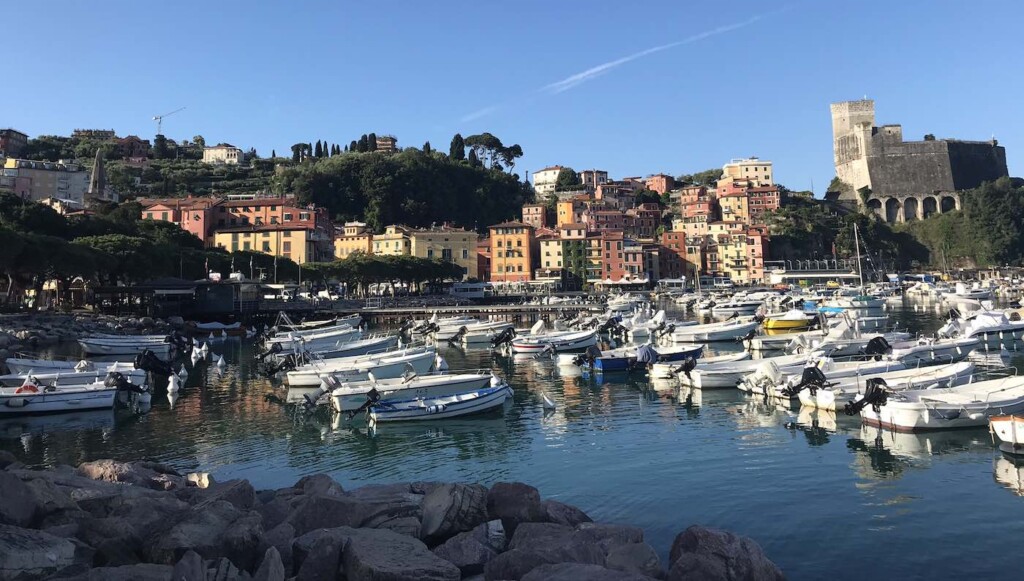 A view across the harbor at Lerici in Italy – © Andrew Corbley
A view across the harbor at Lerici in Italy – © Andrew CorbleyThe Anti-Cinque Terre
Forbes reports that the problem of overcrowding is equally as bad, if not worse, in the small towns of Cinque Terre in Liguria, with congestion at Portofino—what is essentially a fishing village nestled in a sheltered cove—being so bad that anyone stopping to take so much as a photograph in a way that is intrusive or obstructive can be fined up to €275.
That’s a pittance compared to the €2,500 fine you will receive for walking the paths above the Cinque Terre in flip-flops or sandals. The Italian authorities mean business—behave yourself, or begone… There are good options, however, if you take them up on that offer.
If the sea is a must in your holiday plan, consider the Anti-Cinque Terre, an area south of the major city of La Spezia with very similar scenery, but perhaps one-third of the visitors. Much like Cinque Terre, this area is defined by small municipalities on the seaside, painted a variety of colors.
The route includes Fezzano, Le Grazie, Portovenere, Lerici (pictured at the top), Tellaro, and Montemarcello, which together line the shores in a curve around an aquatic feature called il Golfo dei Poeti, because it was here that the famous Romanticists Percy Shelly and Lord Byron both stayed for long periods during their exiles from Britain.
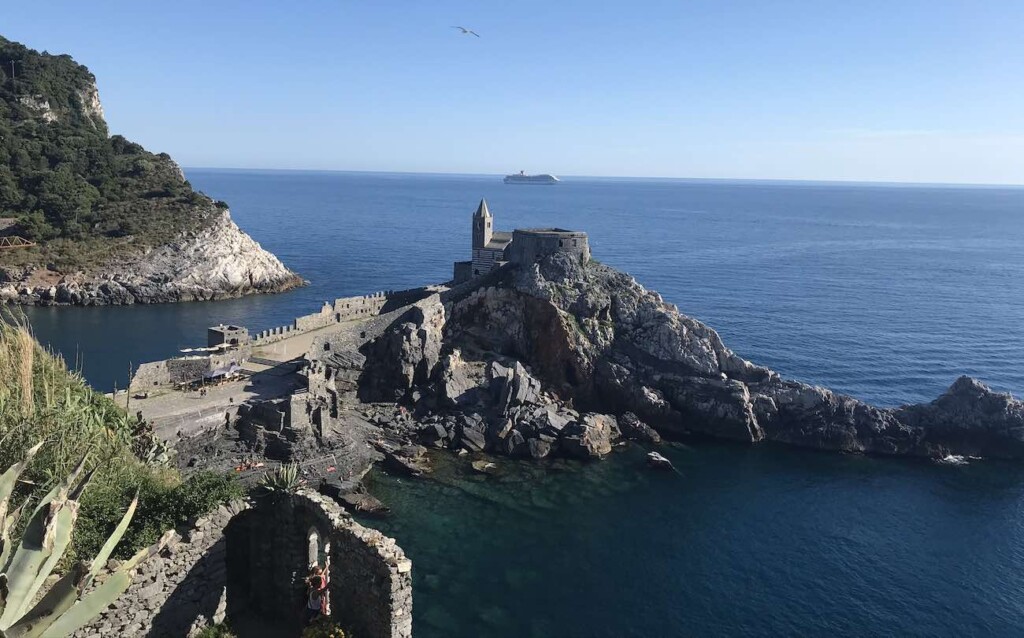 Portovenere’s iconic chapel on the rocks at the end of the port – ©Andrew Corbley
Portovenere’s iconic chapel on the rocks at the end of the port – ©Andrew CorbleyThis author has seen both versions of Cinque Terre, and the differences are minimal, with perhaps the only exception being the verticality of the Cinque Terre villages adding to their drama.
DID YOU KNOW? Your Next Vacation May Be a Lifesaver, Say Researchers Studying Travel, Aging and Health
But some of the towns in the Anti-Cinque Terre, like Le Grazie and Tellaro, are still just towns—exactly like Cinque Terre used to be before Rick Steves announced their stupendous presence to the world.
PASS ON THE VALUABLE TIPS to Friends and Family Dreaming of Italy–By Sharing On Social Media…
Source link

